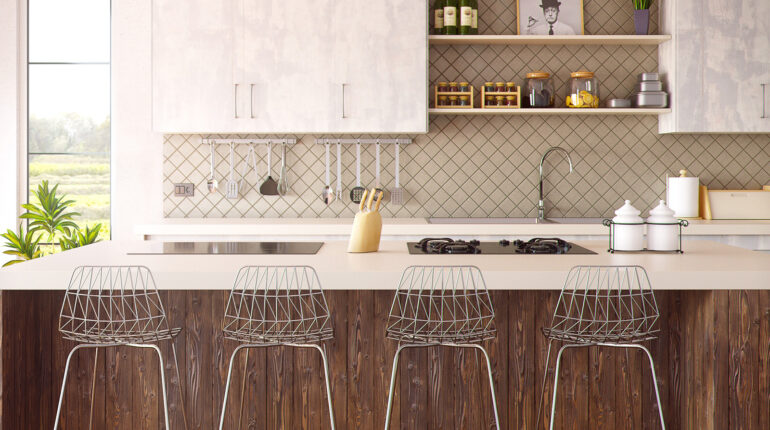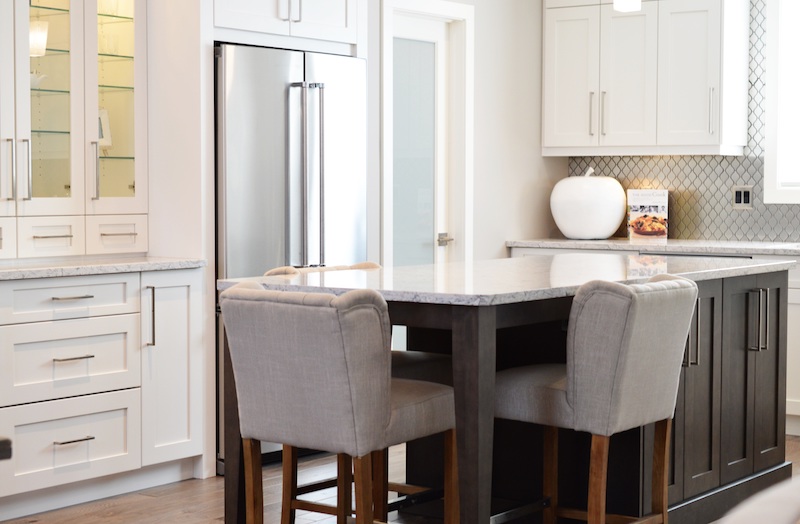
For many homes, the kitchen is no longer used solely for the preparation of food. It is now the epicenter of daily activity. More and more families make use of their kitchens for entertaining and working as well as cooking and eating. As such, many kitchens feature a prominent island. It must be capable of performing a variety of functions. When designing an island to add to your own kitchen, there are a few features to consider:
Function
While kitchen islands are known for their versatility, deciding on a main function for your island space will greatly influence its design. You probably don’t need to focus on entertaining or prepping meals at your island if you already have an area to do so. However, an island is further useful for kitchen storage. Whatever problem you may currently be facing in your kitchen design, you can utilize your new island as an opportunity to fix it. By focusing on a specific use for your island, you will simplify the design process.

Space
The second key consideration when designing an island is the amount of space available. Make sure you take into account both horizontal space and vertical overhead space when determining the size limitations of your new island. Vertical space is important for the possibility of including an overhead range hood above a stovetop, or pendant light fixtures. Ask yourself whether or not those features will obstruct the view of guests sitting across from you. If so, perhaps natural ventilation and recessed lighting are better options. In addition, make sure the aisles around your island are neither too big nor too small. As a rule of thumb, 42 to 48 inches is a good range. Anything lower, you’ll find the area too cramped to work. Any larger and it will become a hassle to move from one part of your kitchen to another, especially when carrying a hot pan!
Materials
Function and space considerations will determine the dimensions and appliances you include in your island. Your chosen materials will decide how it looks. Choose materials that are harmonious with the rest of your kitchen in order to create a cohesive design. There are many different materials available and each has a unique feel. For example, marble countertops complement bright, white kitchens beautifully. Granite is a better option for kitchens featuring a lot of stained wood. Even granite itself comes in a wide variety of different colors and patterns, requiring careful thought during selection.

Call in the professionals
For many people, the best way to ensure that your new kitchen island is perfect is by enlisting the services of a professional designer or architect. They will be able to serve you best if you come to them ready with an idea about the function, size and materials you would like to see included in your island. In addition, images of kitchens and islands that you really like will help a designer understand your likes and dislikes, enabling them to design an island that best suits you and your kitchen.
